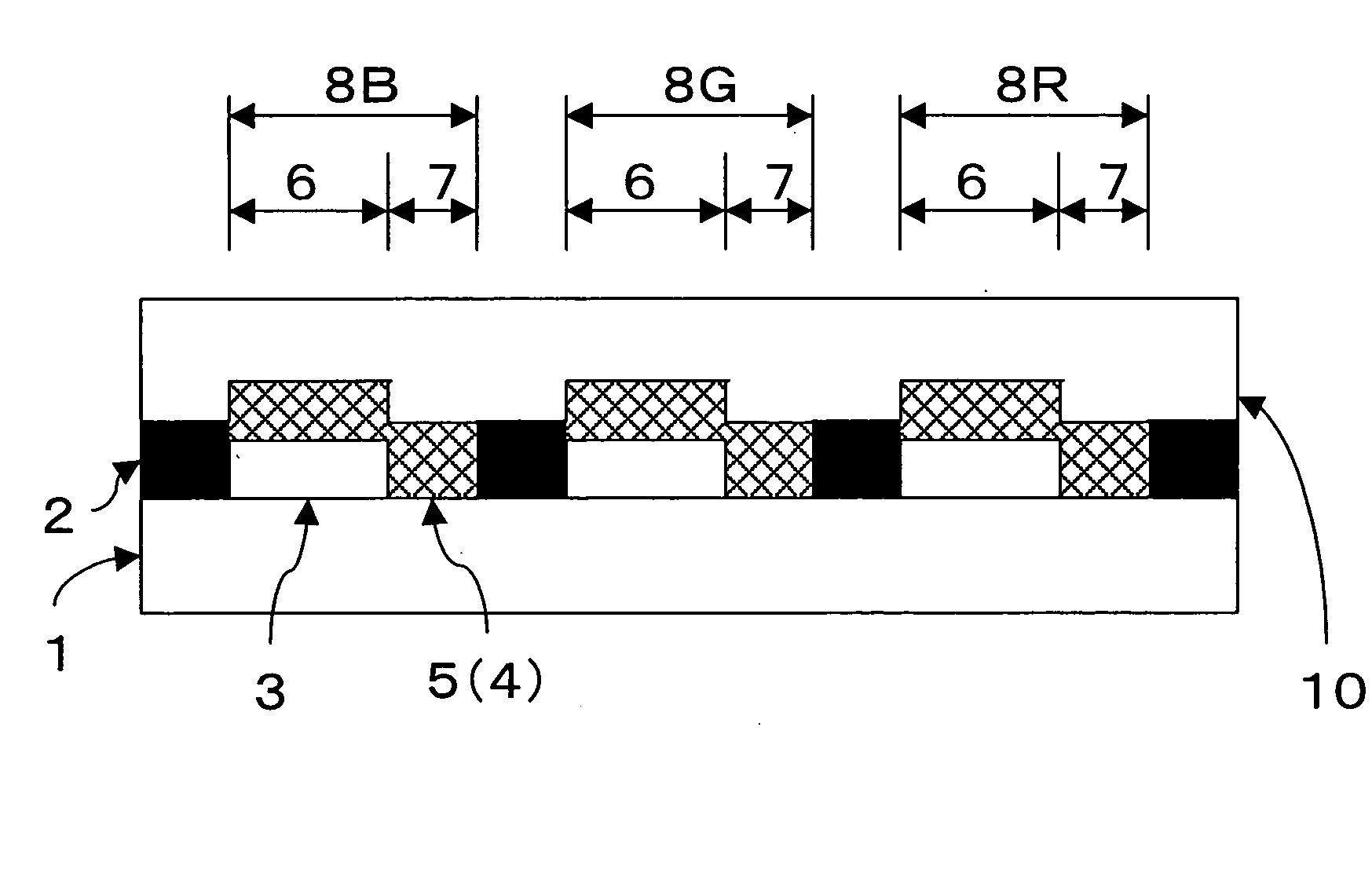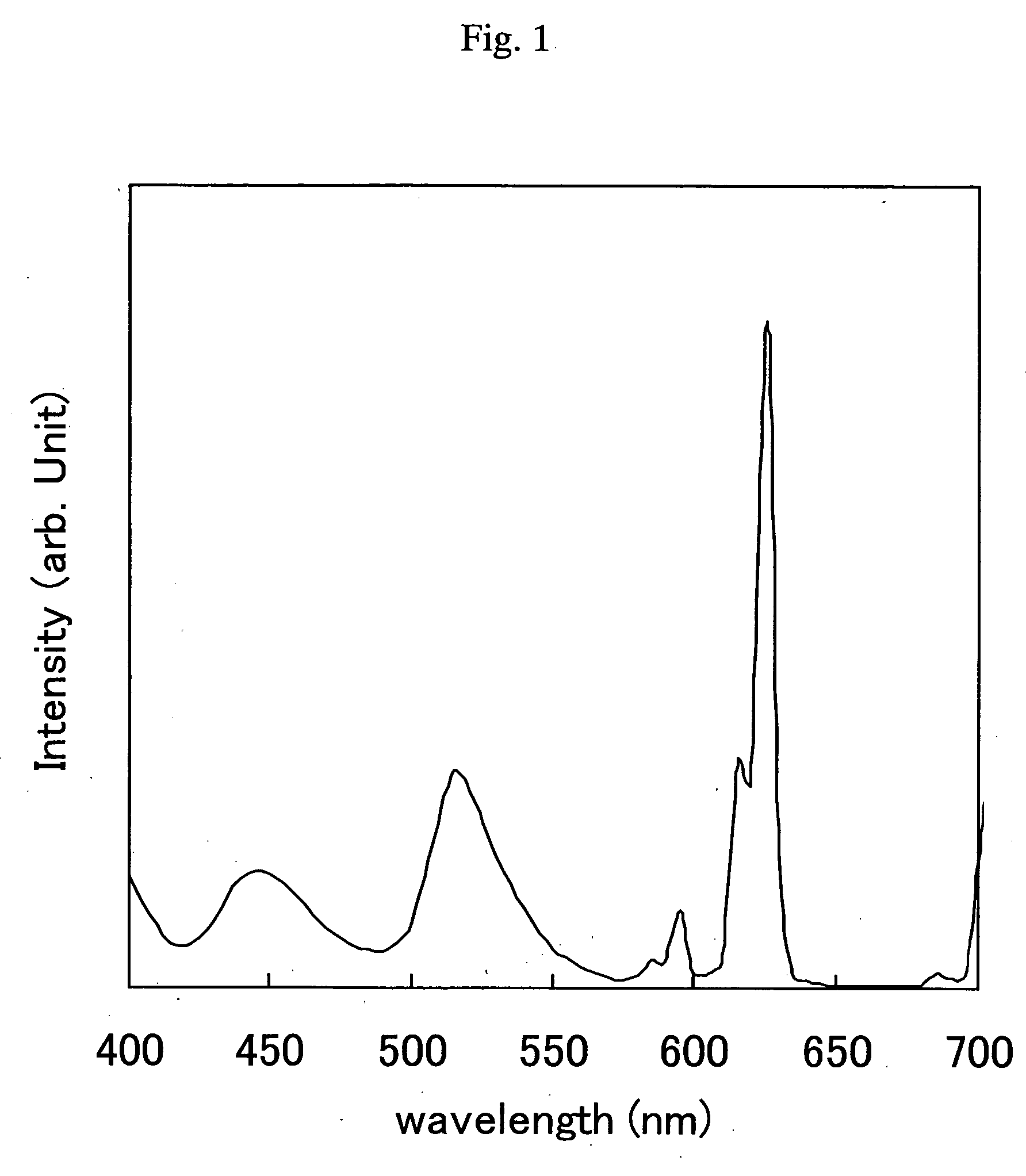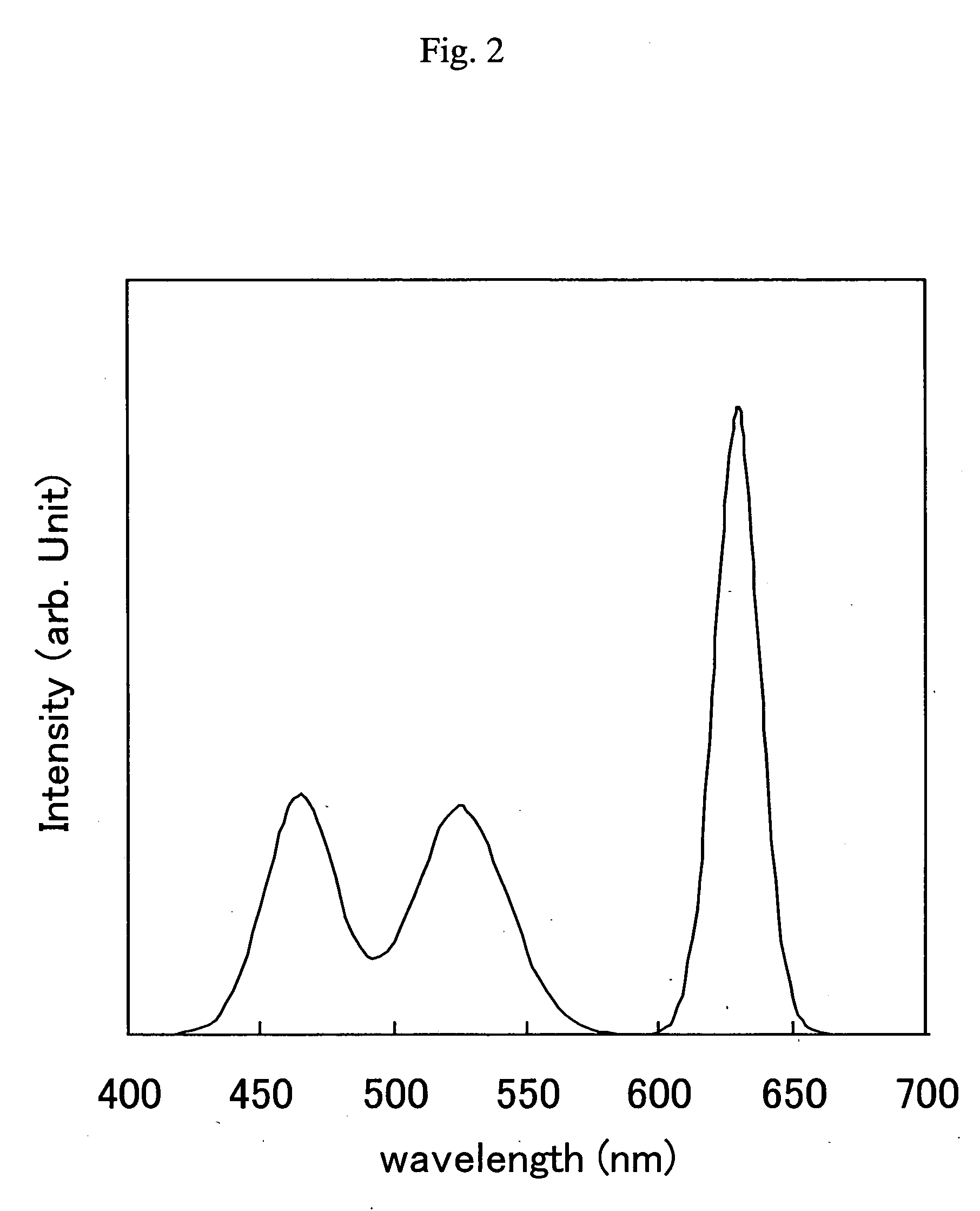Color filter for liquid crystal display and semitransmission liquid crystal display
a liquid crystal display and color filter technology, applied in the direction of optical filters, instruments, optics, etc., can solve the problems of significantly deteriorating visibility, affecting the color reproduction of transmissive displays, and not achieving significant power consumption improvement from improving transmittance, so as to improve the color reproducibility of transmissive displays, improve color characteristics, and improve color reproducibility.
- Summary
- Abstract
- Description
- Claims
- Application Information
AI Technical Summary
Benefits of technology
Problems solved by technology
Method used
Image
Examples
example 1
[0100] A. Formation of Polyamic Acid Solution
[0101] 95.1 g of 4,4′-diaminodiphenyl ether and 6.2 g of bis(3-aminopropyl)tetramethyl disiloxane were charged together with 525 g of γ-butyrolactone and 220 g of N-methyl-2-pyrrolidone, and 144.1 g of 3,3′,4,4′-biphenyltetracarboxylic acid dianhydride was added to the resultant mixture. After reaction at 70° C. for 3 hours, 3.0 g of phthalic anhydride was added to the reaction solution, followed by further reaction at 70° C. for 2 hours to obtain a 25 wt % solution of polyamic acid (PAA).
[0102] B. Synthesis of Polymer Dispersant
[0103] 161.3 g of 4,4′-diaminobenzanilide, 176.7 g of 3,3′-diaminodiphenyl sulfone and 18.6 g of bis(3-aminopropyl)tetramethyl disiloxane were charged together with 2667 g of γ-butyrolactone and 527 g of N-methyl-2-pyrrolidone, and 439.1 g of 3,3′,4,4′-biphenyltetracarboxylic acid dianhydride was added to the resultant mixture. After reaction at 70° C. for 3 hours, 2.2 g of phthalic anhydride was added to the r...
example 2
[0120] A color filter substrate was formed by the same method as in Example 1 except that photomasks having aperture region ratios of 14%, 43% and 18% were used for photolithography of red, green and blue picture elements, respectively. Then, an over coat layer and an ITO film were deposited on the resultant picture element film by the same method as in Example 1. For the thus-formed color filter substrate, the spectrum of each of the central picture element and the four corner picture elements of the substrate was measured. The measured spectra of the picture elements were averaged.
example 3
[0125] A color filter substrate was formed by the same method as in Example 1 except that a colored film of each of red, green and blue picture elements was deposited to a thickness of 1.1 μm, and photomasks having aperture region ratios of 10%, 27% and 10% were used for photolithography of red, green and blue picture elements, respectively. As a result of measurement of the transmissive region chromaticity of each of the red, green and blue picture elements by using standard light source C, the degrees of chromaticity (x, y) of the red, green and blue picture elements were (0.551, 0.305), (0.324, 0.531), and (0.139, 0.135), respectively. Then, an over coat layer and an ITO film were deposited on the resultant picture element film by the same method as in Example 1. For the thus-formed color filter substrate, the spectrum of each of the central picture element and the four corner picture elements of the substrate was measured. The measured spectra of the picture elements were averag...
PUM
| Property | Measurement | Unit |
|---|---|---|
| transmittance | aaaaa | aaaaa |
| thickness | aaaaa | aaaaa |
| particle diameter | aaaaa | aaaaa |
Abstract
Description
Claims
Application Information
 Login to View More
Login to View More - R&D
- Intellectual Property
- Life Sciences
- Materials
- Tech Scout
- Unparalleled Data Quality
- Higher Quality Content
- 60% Fewer Hallucinations
Browse by: Latest US Patents, China's latest patents, Technical Efficacy Thesaurus, Application Domain, Technology Topic, Popular Technical Reports.
© 2025 PatSnap. All rights reserved.Legal|Privacy policy|Modern Slavery Act Transparency Statement|Sitemap|About US| Contact US: help@patsnap.com



